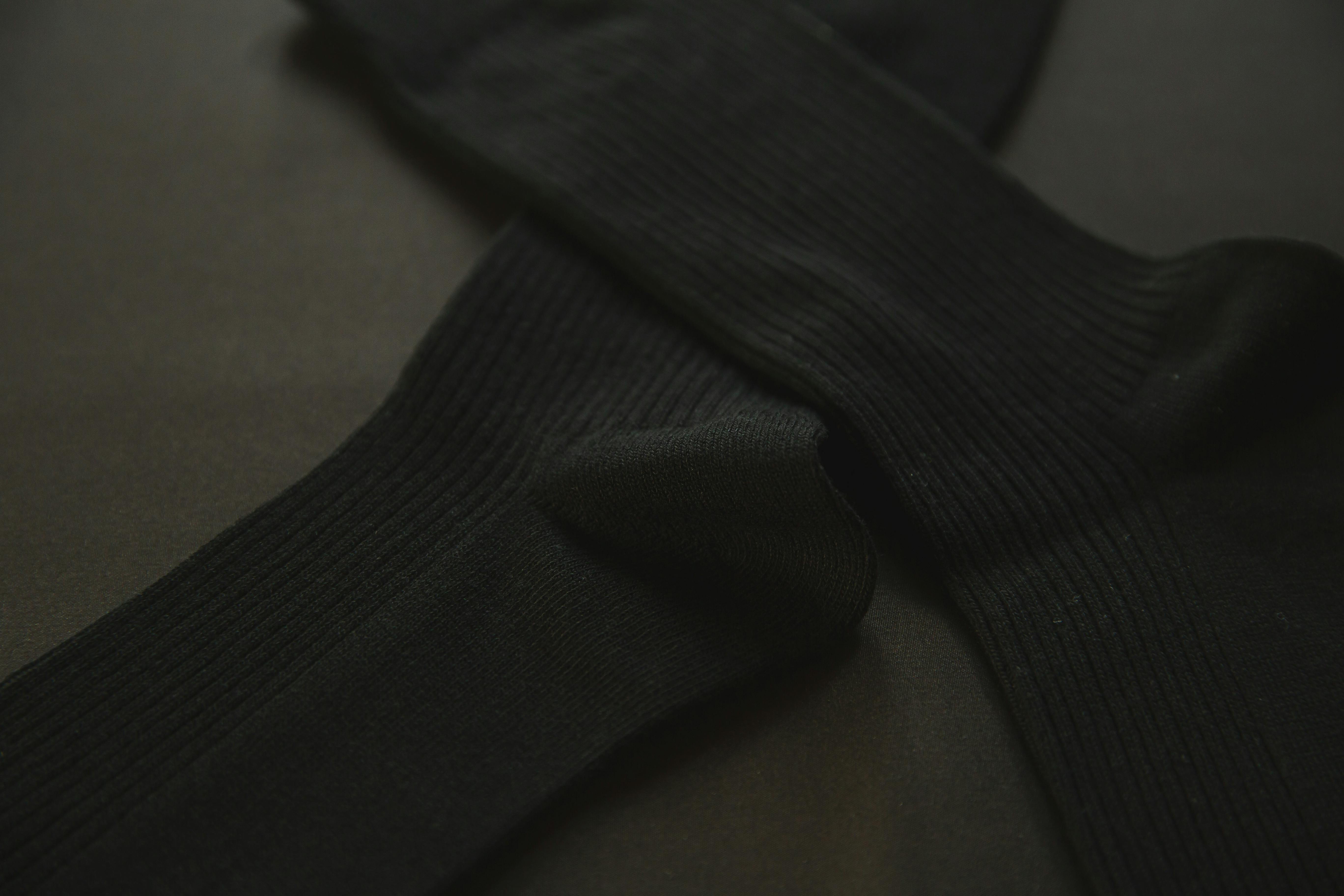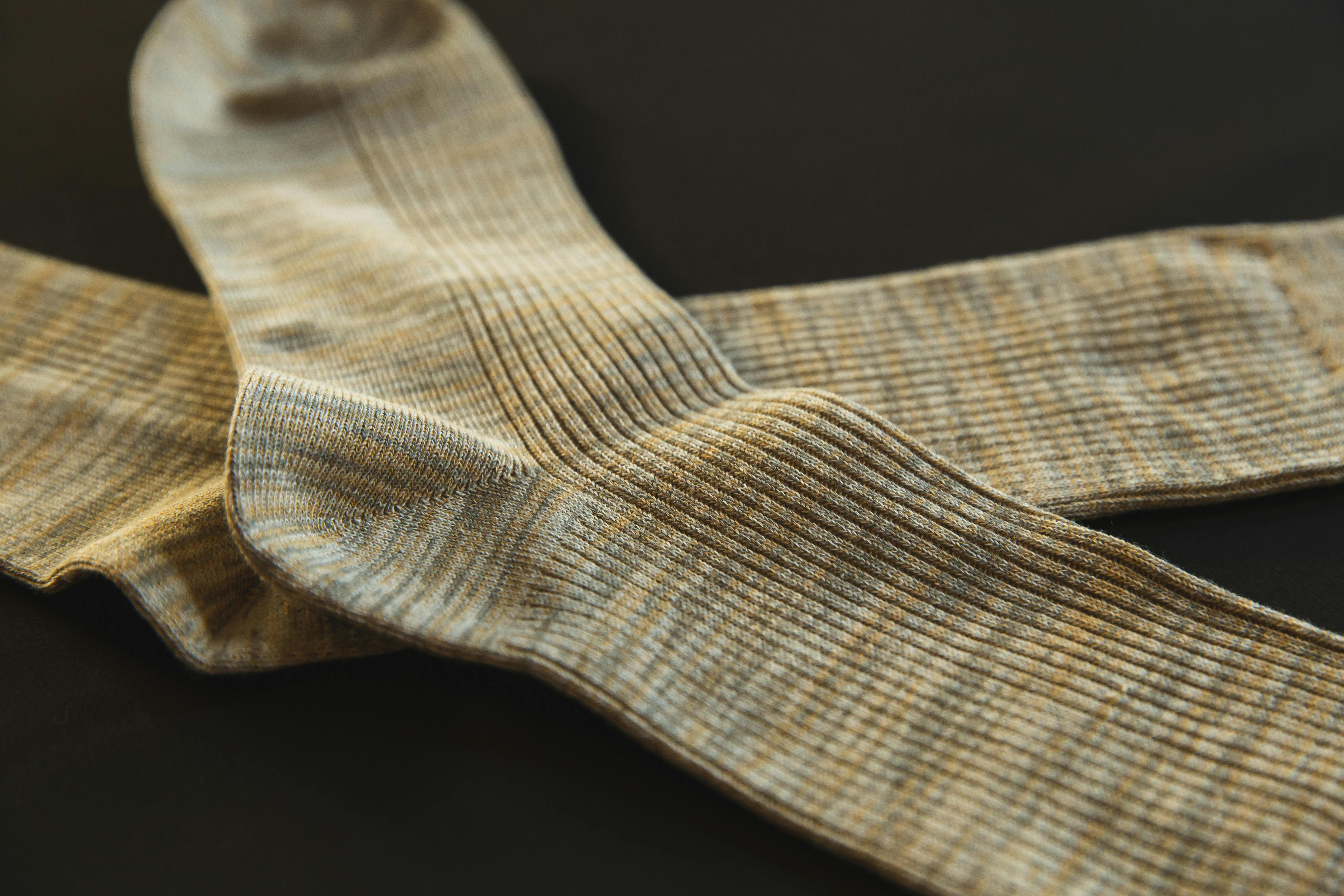How Long Do You Wear Compression Socks

Compression socks are an increasingly popular medical device used to improve circulation, reduce swelling, and provide support for those who suffer from certain medical conditions. They’re designed to be snug-fitting and provide a gentle squeezing sensation on the legs. But with so many different types of compression socks available, it can be difficult to know how long you should wear them each day. In this article, we’ll discuss the benefits of compression socks, how long you should wear them, and potential side effects.Compression socks are a type of medical garment designed to provide support and increase circulation in the lower legs. They are made with an elastic material that is tighter at the ankle and gradually loosens further up the leg. The graduated pressure helps to reduce fatigue, swelling, and discomfort in the legs by increasing blood flow. Compression socks are commonly used by athletes, those who stand or sit for long periods of time, or people with medical conditions such as varicose veins or deep vein thrombosis.
Health Benefits of Wearing Compression Socks
Compression socks are designed to provide graduated pressure on the lower legs to help improve circulation. They are often used to help reduce swelling, fatigue, and leg pain caused by long-term standing or sitting. Compression socks can be beneficial for many people, including athletes, pregnant women, and those who have poor circulation or varicose veins.
For athletes, compression socks can help improve performance by providing extra support to the muscles in the lower legs and feet. This added support helps reduce muscle strain and fatigue during exercise while also helping to reduce recovery time after a workout. Compression socks can also help reduce the risk of injury by providing extra cushioning for the feet and ankles during high-impact activities.
Pregnant women often experience swelling in their feet and ankles due to increased pressure on their legs from their baby’s weight. Wearing compression socks can help reduce this swelling by providing extra support for the lower legs and feet. This can help reduce discomfort caused by swelling and also decrease the risk of developing varicose veins later in pregnancy.
For those who suffer from poor circulation or varicose veins, compression socks can be very beneficial. Compression socks provide graduated pressure on the lower legs which helps improve circulation in these areas. Improved blood flow helps reduce swelling, fatigue, and leg pain associated with poor circulation or varicose veins.
Overall, wearing compression socks can be beneficial for a variety of people including athletes, pregnant women, those with poor circulation or varicose veins, as well as anyone who needs extra support for their lower legs or feet. Compression socks provide added support which helps reduce muscle strain and fatigue while also improving circulation in the lower legs and feet.
How Long Should You Wear Compression Socks?
Compression socks are beneficial for those suffering from a variety of medical conditions, such as venous insufficiency, swelling, and circulation problems. Wearing compression socks can help improve circulation and reduce swelling in the ankles, legs, and feet. But how long should you wear them?
The answer to this question depends on the medical condition that you are treating. Generally speaking, wearing compression socks for an extended period of time is recommended. The American College of Foot and Ankle Surgeons recommends wearing compression socks for up to 8 hours a day. However, if your doctor has prescribed them for a specific medical condition or injury, they may recommend different durations.
When first beginning to wear compression socks, it is important to start off slowly and gradually build up the amount of time that you wear them each day. This will help your body get used to the increased pressure and reduce any potential discomfort or side effects. It is also important to ensure that the socks fit properly; they should not be too tight or too loose.
Lastly, it is important to keep in mind that compression socks should not be worn 24 hours a day or while sleeping as this can lead to poor circulation and other complications. Wearing them for too long can also cause skin irritation or other issues due to the increased pressure on the feet and ankles. It is best to consult with your doctor before wearing compression socks for an extended period of time.
Choose the Right Size
When choosing compression socks, it’s essential to get the right size. Get a sock size that fits snugly around your leg without being too tight or too loose. The fabric should be able to stretch to fit your leg but not so much that it slips off your foot. If you have larger legs, you may need to buy a bigger size. If you’re unsure, consult a medical professional for advice on what size is best for you.
Wear Them Correctly
Compression socks should be worn correctly in order for them to work effectively. Be sure to put them on before getting out of bed in the morning and take them off before going to bed at night. It’s important to avoid bunching up material as this can reduce the amount of support provided by the socks. Make sure that the material sits flat against your skin without any extra folds or creases.
Change Your Socks Regularly
It’s important to change your compression socks regularly in order for them to continue providing optimal support and comfort. Depending on how often you wear them and how active you are, it can be necessary to replace them every two weeks or so. This is especially true if they become worn out or stretched out due to frequent use.
Wear Shoes with Supportive Insoles
When wearing compression socks, it’s also important to wear shoes with supportive insoles. This will help provide extra cushioning and arch support which can further reduce fatigue and soreness caused by standing or walking for long periods of time. It can also help prevent potential injuries from taking place due to excessive strain on joints and muscles.
Choose Breathable Materials
Finally, make sure that you choose compression socks made from breathable materials such as cotton or nylon which will allow air circulation around your legs and feet while still providing adequate compression levels. Not only will this keep your legs cool but it will also prevent moisture buildup which can lead to skin irritation and fungal infections such as athlete’s foot.
Types of Compression Socks
Compression socks are a type of specialised hosiery that provide support to the feet and lower legs, helping to reduce swelling and discomfort caused by prolonged standing or sitting. They come in a variety of sizes, materials, and levels of compression, so it’s important to find the right pair for your needs. Here, we’ll take a look at the different types of compression socks available:
Graduated Compression Socks: Graduated compression socks are designed to provide the highest pressure at the ankle and gradually decrease as they go up the leg. This helps promote circulation and reduce swelling. They come in various levels of compression (measured in millimetres of mercury), ranging from mild (8-15 mmHg) to firm (20-30 mmHg).
Anti-Embolism Stockings: Anti-embolism stockings are designed to prevent blood clots from forming in the legs. They apply pressure at both the ankle and calf area, but not as tightly as graduated compression socks. These are usually used after surgery or childbirth, but can also be used for everyday comfort.
Compression Trouser Socks: Compression trouser socks are ideal for those who want full coverage for their legs. They provide support from the toes all the way up to just below the knee for maximum comfort and relief. They also come in various levels of compression (15-20 mmHg).
Compression Sleeves: Compression sleeves are an ideal option if you don’t want to wear full length socks or trousers. They cover just your calves and provide support while allowing your feet to remain uncovered. These can be used with athletic activities or everyday activities such as walking or running errands.
Therapeutic Compression Stockings: Therapeutic compression stockings are designed specifically for medical purposes such as treating varicose veins or edema (swelling). These usually have higher levels of compression (20-30 mmHg) and require a prescription from your doctor before you can purchase them.
Compression Pantyhose: Compression pantyhose are designed for women who want extra coverage on their legs while still providing support. These come in various levels of compression (10-30 mmHg) and styles such as knee high, thigh high, or waist high depending on your preference.
No matter what type of compression sock you choose, make sure that you measure your leg correctly before purchasing a pair so that you get the right fit for maximum comfort and effectiveness.

When To Avoid Wearing Compression Socks
Compression socks are a great way to improve circulation and reduce swelling, but they should only be worn when it is medically necessary. If you have any underlying medical conditions or if your doctor has prescribed them, then wearing compression socks is advised. However, if you are healthy and do not suffer from any medical conditions, then it is best to avoid wearing compression socks unless your doctor has prescribed them.
Compression socks should also not be worn if you have poor circulation or open sores on your legs. Compression socks can worsen these conditions and cause further damage to the affected area. Additionally, compression socks can be restrictive and uncomfortable for those who are not used to wearing them.
Finally, it is important to consult with a doctor before purchasing or wearing compression socks. A doctor will be able to recommend the right kind of compression sock for your individual needs and provide instructions on how often they should be worn. It is also important to note that compression socks should never be worn overnight as this can cause serious health problems such as deep vein thrombosis.
The Dangers of Wearing Compression Socks for Too Long
Compression socks are often prescribed for people suffering from edema, varicose veins, and deep vein thrombosis. They are also commonly used by runners and athletes to improve circulation and reduce pain and swelling in the legs. However, wearing compression socks for too long can lead to a number of serious medical risks.
Wearing compression socks for extended periods of time can reduce the amount of oxygen that gets to the skin. This can lead to skin irritation, sores, or even ulcerations. It’s important to take regular breaks from wearing compression socks in order to allow the skin to breathe and heal.
Compression socks can also cause an increase in blood pressure, which can put additional strain on the heart and increase the risk of cardiac arrest or stroke. To prevent this, it’s important to wear compression socks only as directed by your doctor or physical therapist.
In addition, wearing compression socks for too long can cause reduced blood flow in the lower legs and feet. This can lead to numbness and tingling sensations in these areas, as well as an increased risk of developing peripheral neuropathy (nerve damage).
Finally, wearing compression socks for too long can cause heat intolerance due to trapped heat that cannot escape from the body. This can lead to excessive sweating which could result in dehydration or heat stroke if not addressed immediately.
It is important to keep all these potential risks in mind when considering whether or not you should wear compression socks. Always consult with your doctor before beginning a new treatment plan involving compression socks, and follow their instructions carefully when it comes to how long you should wear them each day.
How To Choose The Right Type of Compression Sock
Compression socks are a great way to improve circulation, reduce swelling, and relieve pain. But with so many types of compression socks available, it can be difficult to choose the right one. Here are some tips to help you pick the right type of compression sock for your needs.
First, consider your lifestyle and activity level. If you’re an active person who spends a lot of time on your feet or participates in strenuous activities, you may want to look for a sock that offers more support and cushioning. If you’re mostly sedentary, then a lighter compression sock may be sufficient.
Next, think about the features you want in a compression sock. Do you need something that wicks away moisture? Are arch supports important? What kind of fabric do you prefer? Do you need open or closed toe socks? Carefully consider all these features when choosing your compression sock.
Finally, make sure to get the correct size for your compression socks. If they’re too tight they may cause discomfort, but if they’re too loose they won’t provide enough support or compression. Measure your feet carefully before making a purchase and read the sizing guide provided by the manufacturer.
By following these tips, you can easily find the right type of compression sock for your needs. With the right fit and features, these socks can provide much needed relief and comfort throughout the day!

Conclusion
Compression socks can be a valuable addition to any wardrobe, especially for those who spend considerable time on their feet. With their ability to reduce muscle fatigue and swelling, improve circulation, and provide warmth and support, they are an excellent choice for anyone who is looking for additional support. Depending on the activity level, compression socks should be worn anywhere from a few hours each day to all day depending on personal preference. Although compression socks can provide many benefits, it is important to remember that it is best to consult with a physician before beginning any new exercise or wearing any type of compression sock.
Overall, compression socks are an excellent way to improve circulation and reduce muscle fatigue. By providing additional support and warmth, they can play an important role in improving overall physical health. The length of wear time will depend on the individual’s needs and activity level; however, it is important to consult with a physician prior to beginning any new exercise program or using compression socks as part of your daily routine.
